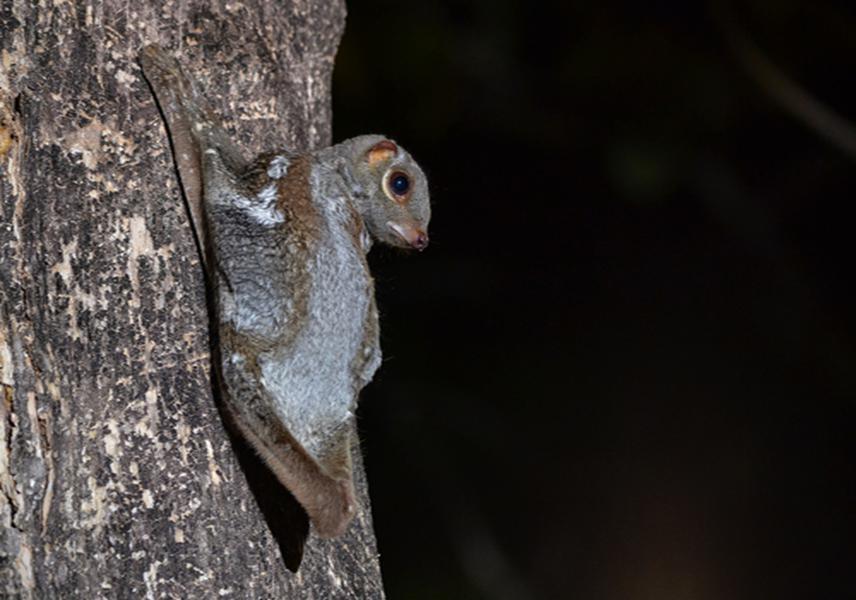Muhammad Fizri Bin Ahmad Zubir
This project will assess the ecology, social behaviour and adaptation to disturbed environment of the Sunda colugo (Galeopterus variegatus). Data on the animals’ activity patterns, social behaviour, diet. and home range will be collected. The field study will involve the radio-tracking of colugos who will be followed for one year to comprehensively assess their ranging behaviour and social structure.
During our field work, we will organise a workshop with local stakeholders on Langkawi Island to discuss share our knowledge on nocturnal mammals and advocate for sustainable and wildlife ecotourism practices on the island.
Another outreach activity will be conducted in selected schools on the island revolving around nocturnal mammal knowledge and activities conducted both in class and at home to educate children about the importance of these fascinating creatures.

Colugo Observing Surrounding.
Many nocturnal mammal species are misunderstood, which can lead to wrong management practices such as killing when considered as pest or removing from the wild for the pet trade. One species in Asia that has not received much attention in the past is the Sunda colugo (Galeopterus variegatus). The knowledge about the ecological importance of this species is generally lacking.
Only two species are recognized throughout a wide range of South-East Asia and they are therefore still listed as Least Concern on the IUCN, however as many as eight species are reported to exist. Recent studies have shown that populations of colugos are abundant on many islands in Peninsular Malaysia and that these animals are habituated to human presence in some areas. This study is expected to contribute to colugo research and conservation in three ways.
Firstly, a detailed study on colugo behaviour including feeding ecology will be conducted in two field sites, a heavily disturbed area (Temoyong) and an almost undisturbed forested area (The Andaman Resort). This will gain new information about their behaviour, especially their social structure and adaptation to disturbance.
Secondly, we will conduct behavioural focal animal follows by using two different methods, the use of red light and white light. Use of red light for nocturnal mammal research has been suggested by Finley since 1959 mammals but since then this method has still not become a recognized standard procedure. Red light is believed to be less invasive and disruptive on natural behaviours and therefore an important tool for conservation management of nocturnal mammals (Miard et al, 2020, under review). The assessment of impact of light on colugo behaviours will allow us to compare between two sites as the animals might be more used to the white light in the heavily disturbed area.
Thirdly, we will run an awareness programme about colugos, for to the local community of Langkawi Island. Different outreach activities will be conducted to reach a wide audience. A meeting and a workshop with key tourism stakeholders on the island will be conducted to update on nocturnal mammal ecology and discuss wildlife-friendly ecotourism practices. School activities will be conducted in schools on the islands with activities both in class and at home. The school program will be assessed to gather its efficiency and learning outcomes.